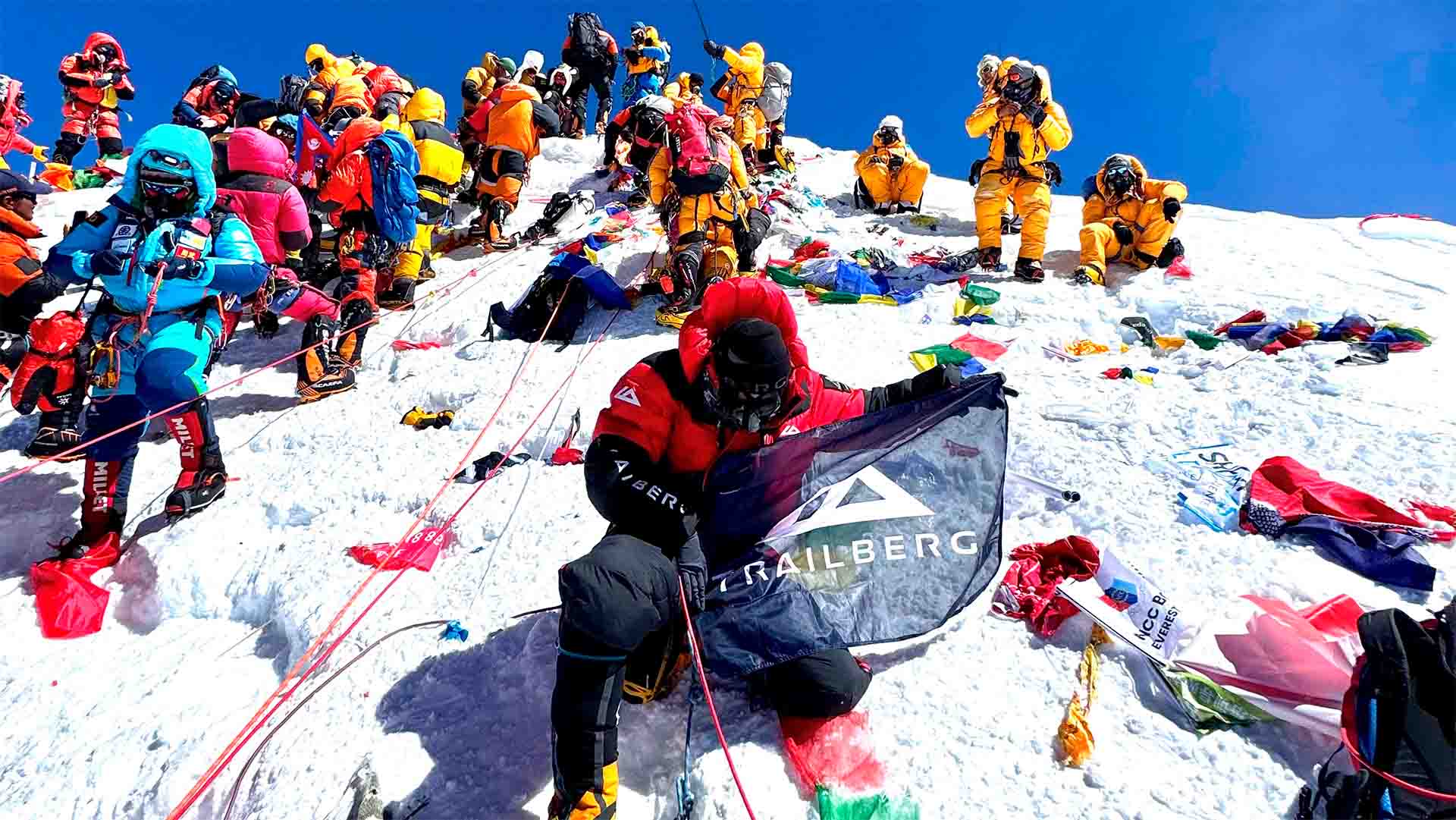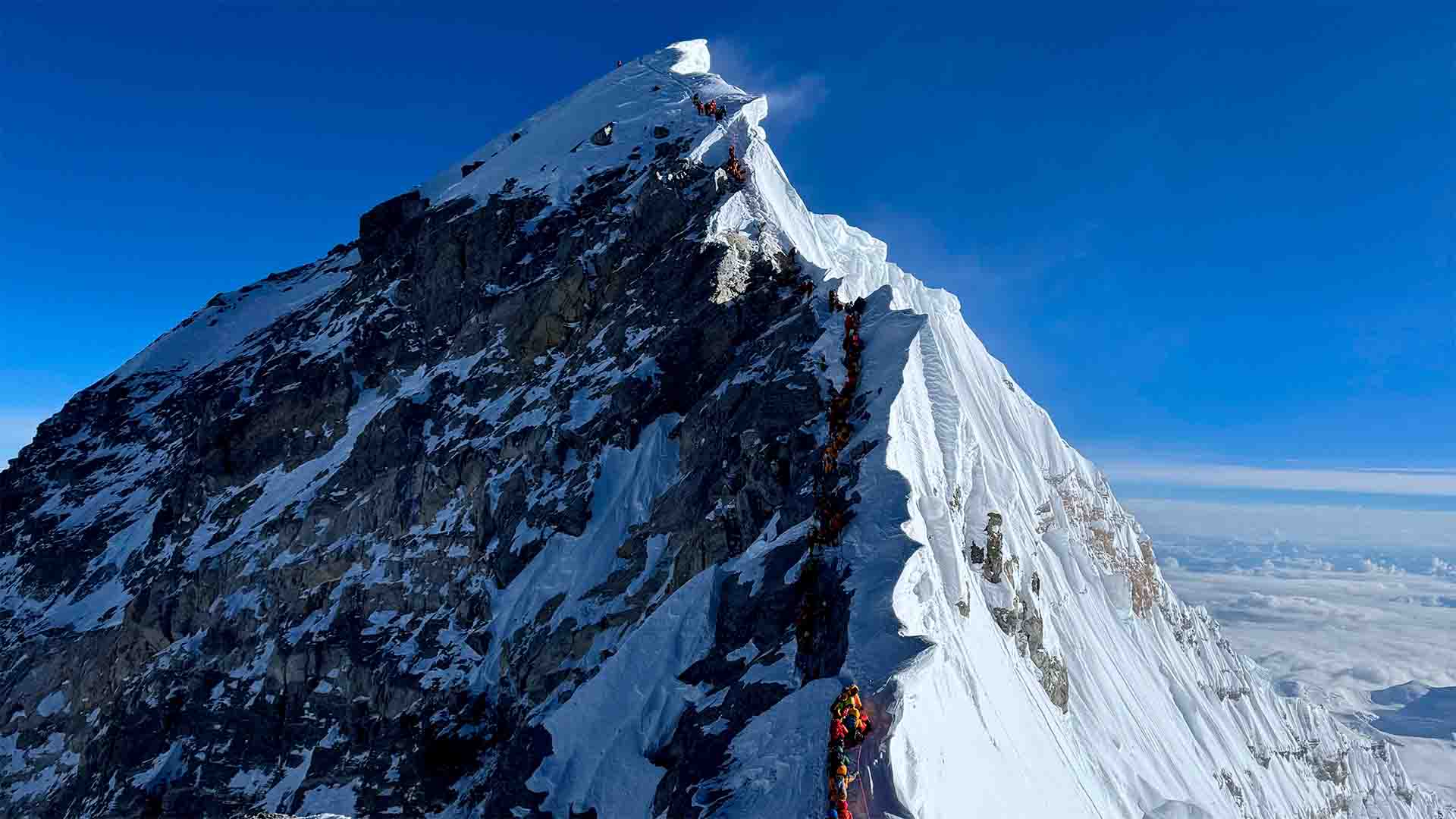How would you feel after conquering the world’s highest mountain? What did you need to do to get to the summit and how did you recuperate from the death zone afterwards?
We asked Cumbrian mountaineer Ben Wright about his successful expedition to the peak of Mount Everest. And in the spirit of true hospitality, we invited him along to the spa at Low Wood Bay to recharge his batteries with a ‘Thermal Journey’, a deep tissue massage and Himalayan salt sauna.
Ben started climbing in the Lake District when he was 10. He is now one of an elite band of mountaineers who can say they have reached the top of the world – an inspiration to hikers of all ages and abilities who get out and about on the Cumbrian fells every day. Here’s our interview with Ben about his Everest adventure.

My love of hiking started when I was just 10 years old. My aunt was a keen hiker and used to take me to the Lake District to climb Wainwrights. My first one was Coniston old man and after doing that I got addicted and was asking her to take me out all the time.
I found my love for hiking when I was still relatively young but once I started taking it seriously and ticking the Wainwrights off, that’s when I began to hike every week. I’d already climbed Helvellyn, but that was my first climb after Covid lockdown restrictions lifted. Reaching that summit that day gave me the urge to complete all the Wainwrights.
Nobody in particular inspired me - it was more a dream of something I've been fascinated in ever since I was younger, watching countless films and documentaries on it and reading about it in books. I said to myself that hopefully one day I can have my chance of climbing it.
Everyone knows what Everest is and how hard it is and I love to challenge myself, so the older I got and the more climbing I did, the more real it became that I'd be able to do it.
So I worked my way up to it, by gradually gaining experience in the Alps and then spending two years in a row climbing 6,000m summits in Nepal. This included tackling Ama Dablam, one of the hardest mountains in the world. I could see the summit of Everest from the top of Ama Dablam and just thought “wow, that needs to be next, I'm ready!”.
It took me 4 months of hard training for Everest, including strength sessions in the gym, training my body for the coldest weather and conditions and taking ice baths. I also rented a hypoxic machine to do incline treadmill and exercise bike work with a mask on to restrict my oxygen levels and pre-acclimatise. That was hard work. I'd wear my 8,000m summit boots on the stepper machine with a 20kg backpack too. I wanted to kind of suffer to deal with the mental side too, so that when things got hard I’d already have a good mentality of working hard for it.
The expedition was incredible but also way harder than I ever imagined. I got to see things that only about 0.001 of the world’s population will ever see or experience. And the views were out of this world!
Physically, I was close to my limits and mentally it was so hard being away from my family. It’s a really hard place to be on the mountain when it’s so unpredictable and anything can happen, especially in the death zone above 8,000m where all sorts can go wrong. I had to perform a rescue on the way down when one of my climbing group became snow blind. So I stuck by them and helped them down off the mountain, risking my own life a little bit more. But I couldn’t leave them - in that situation we’re all scared and need help.

My motivation was reaching the summit, getting back home safely and making my daughter proud. I wanted to show her anything in life is possible and I’d replay that in my head constantly throughout the expedition. I received messages on my Garmin tracker whilst on the mountain. My family and girlfriend telling me how well I was doing and to keep going and that they were so proud helped me massively.
It was very important to recover as I lost a stone and a half during the expedition. My energy levels were extremely low and I was very fatigued. It's been a few weeks since I got back and I'd say I'm nearly recovered. But the mental side is the most difficult and it
hasn’t fully sunk in yet that I managed to reach the summit. I saw a lot of things on the summit push that people wouldn’t ever see which affects you a lot.
My advice would be to just give it a go. Start on a nice easy one and see if it's for you. Make sure you go with someone preferably who has hiked before and make sure you’re safe whilst doing so.
Hiking is amazing for your mental health and has helped me so much in the last five years. Being outdoors is amazing and you won't regret it once you reach the top and get to take in the fantastic views. A lot of people don’t take advantage of the Lake District and being in such a beautiful part of the country. There's so much to see and so many Wainwrights to climb that are easily accessible.
My favourite part was 100% the summit. Sitting there taking in the views that I’d worked so hard for and dreamt of seeing most of my life, plus the sense of pride and accomplishment I had up there brought tears to my eyes. I met so many amazing people who I can call friends for life and learnt so much about myself and what I was capable of.

I also loved the Khumbu ice fall, a section regarded as the most dangerous part of Everest between base camp and camp 1. Crossing the ladders and crevasses was amazing which I had to do 4 times in total.
Next up for me is to finish the Munros in Scotland. I have around 97 left to do and then hopefully go and climb the Matterhorn in Switzerland later in the year. After that my long term plans would start next year by doing another 8,000m peak which hopefully will be K2.
Prioritising your health and recovery is extremely important. Your body needs time and rest for months after an expedition like this. I've started to put the weight I lost back on and making sure I eat healthily and slowly progress my workouts in the gym again.

The kind invitation for the Spa Day at Low Wood Bay really helps, especially the deep tissue massage to reinvigorate my muscles! Low Wood Bay is my favourite spa in the Lake District and this is my fourth visit here. It’s another exciting day.
The Wainwrights are a highly popular series of fells and hiking routes for visitors to the Lake District. There are 214 Wainwright peaks to scale in all, with hundreds of routes to climb them. Each of the fells are featured in Alfred Wainwright's Pictorial Guide to the Lakeland Fells. And they are all located within the boundary of the Lake District National Park. All of them except Castle Crag in Borrowdale are over 1,000 feet in height.
